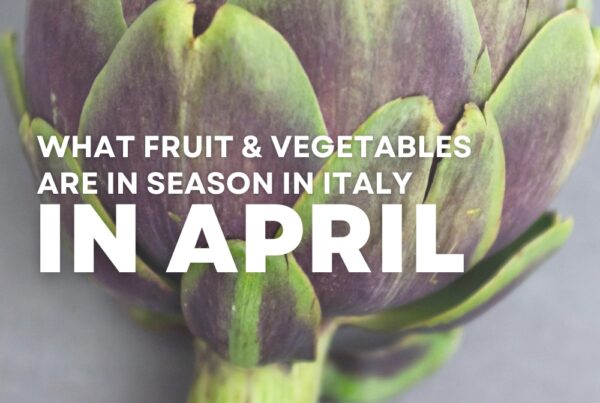Fennel, or Foeniculum vulgare (also Foeniculum officinale), is a sweet aromatic herb of the Apiaceae family, which includes carrots and parsley, that grows like a weed throughout the Mediterranean. It’s not surprising then that its bulb, seeds, pollen and fronds are key ingredients in some of the most delicious southern European cuisine. Also, fennel has amazing medicinal qualities that make it one of the most sought after herbs for those who are health conscious. Its liquorice-like flavor stands out and makes it a great complement to fish and hearty meats but it can be simply sliced, sprinkled with olive oil, lemon and salt for a salad or used in a variety of baked sweets. Wild fennel–in Italian finocchio selvatico but also called finocchietto–is an essential ingredient in much Sicilian cooking as it literally grows all over the island (I’ve seen people pull over on the highway near Siracusa to forage the plants so they could bring them home for lunch or dinner).

History
Various historical records cite fennel as a significant and much-used plant for centuries. There are documents that indicate its presence in ancient Egypt (for food and medicine) and allegedly as a snake bite remedy in China. The Greeks however took fennel to the heights of historical importance. In fact, the town Marathon south of Athens is named for the herb (in Greek marathos means fennel). In ancient Greece fennel became synonymous with victory after an important battle in 490 AD against the Persians, which took place on a fennel field. Today the word marathon means the long-distance races that happen across the planet but it’s not such a leap to understand why. It makes perfect sense once we know that it was a Greek soldier who ran from the battle ground all the way to Athens to announce the historic victory.

In ancient Rome, a type of fennel or in latin foenum, meaning hay, was referred to by the poet Catullus in the 1st century BC as a contraceptive (he advised his mistress to eat it for obvious reasons) and, Pliny the Elder (23-79 AD) published, just before his death, the epic tome Naturalis Historiae, or Natural History, which was an encyclopedic series of volumes touching on an array of topics about the natural world from astronomy and botany to zoology. In it he suggests that fennel is an aid to improving eyesight.
Medicinal Use
Digestive problems have been and still are the main ailments helped by fennel. In addition, it was believed to aid weight loss; stimulate lactation in young mothers; birth control (a related plant silphium or ‘giant fennel’ is specifically cited for this purpose); and, as our Roman philosopher suggests, to help us see more clearly. Also, during the Middle Ages chewing on the seeds was common during times of fasting, like Lent, to ward off hunger. Gastrointestinal problems were typically treated with fennel-based teas and in Europe both braised and raw fennel still are ingested to counteract stomach and intestinal upsets.

Culinary Use
The bulb as well as the fronds, stalks, flowers, pollen and seeds are edible and used in a variety of recipes both sweet and savory. Anise (Pimpinella anisum) is not the same plant as fennel–though they come from the same horticultural family–but it shares its liquorice-like taste so they are often confused. Anise more than fennel is used for many well known liqueurs like Pernod, Sambuca and Greek Ouzo as well as similar versions that can be found from Turkey to Lebanon but wild fennel is also used to make alcohol. For example certain Italian digestivi (after-dinner digestive drinks) are made with their fronds or essence, specifically the Sicilian liquore di finochietto. And, fennel along with anise is mixed with wormwood to create the drink of choice for 19th century French artists and poets, Absinthe.

The bulb can be eaten raw sliced with oranges and black olives as a deliciously fresh salad or cooked into stews and sauces. The fronds are used in many recipes, including the classic Sicilian pasta alla palermitana, but also are found in many other dishes in southern Italy often combined with fish. The stalks add a nice herbal counterpoint when baked with fresh sea bass or mixed with other vegetables to make a healthy homemade stock.
Fennel flowers, which closely resemble dill, have a more subtle but still important anise-like flavor. Recently the pollen from these flowers has been coveted by the most fashionable contemporary chefs. Now that it is a prized ingredient used around the world in exclusive restaurants some say it has become like saffron in its rarity and pricing. In Rome, on a more popular level, fennel pollen frequently is massaged along with garlic, rosemary, salt and pepper into a deboned suckling pig before being trussed then roasted to make the famous porchetta.

Fennel seeds are perfect blended with ground pork then stuffed into casings for sausages and salami (Tuscans make the delightful Finocchiona kind) but they are equally tasty in dolci like cookies, sweet breads and cakes. On that sweet note, think of the herb mixture Mukhwas given at the end of an Indian meal. One of the ingredients is fennel seeds and, once again, it is said to help digestion but also freshen the breath!
All these great qualities make this amazing herb one of our favorites.








